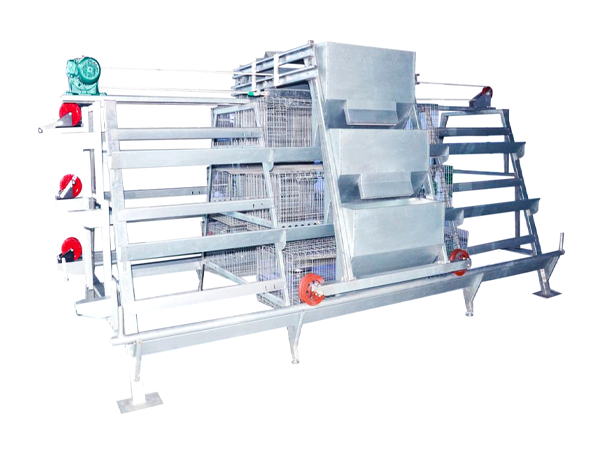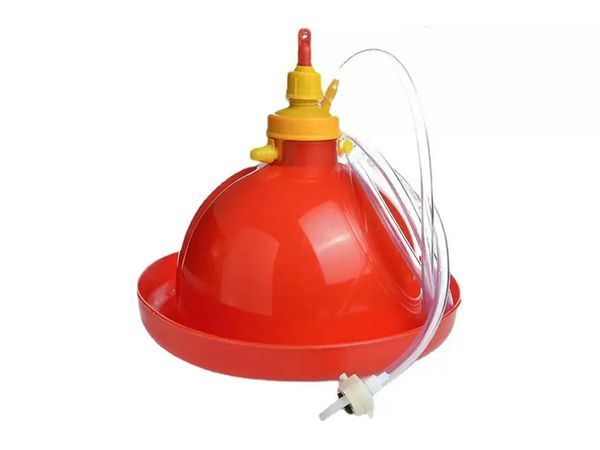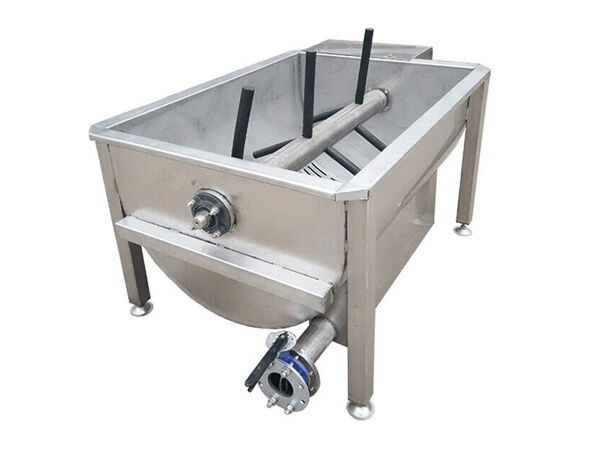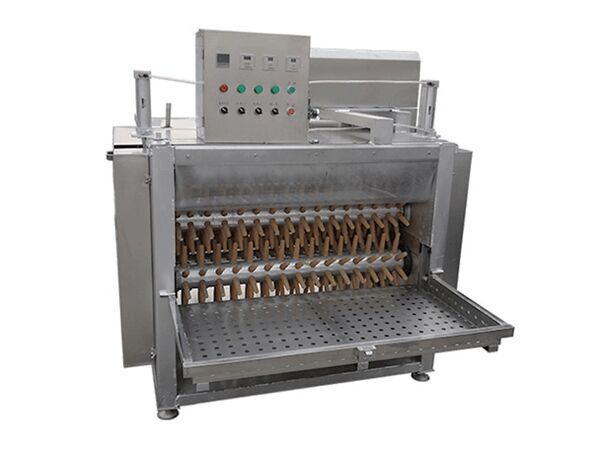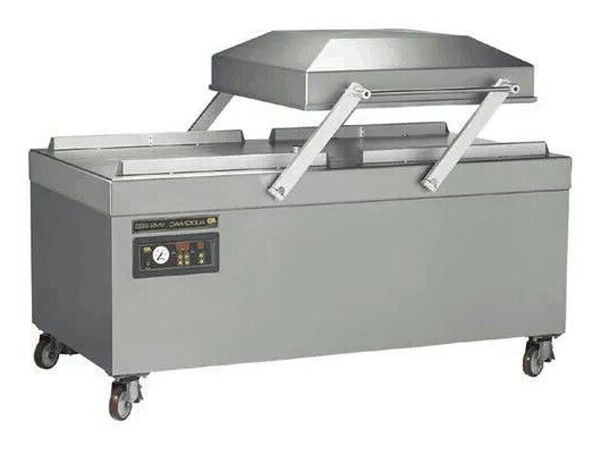
Basic information
The major genetic potential of the modern broiler is nothing less than extraordinary, maximizing that genetic potential during grow out is a worthy goal. It is vital to provide all the nutrients, water, fresh air and other inputs that will allow the bird to grow to its potential, but it is also important to think about pacing the bird to finish the race strong and efficiently
A careful study was carried out to check the fast growth as the ultimate goal which put all their effort into maximizing average daily gain. We contend that striving for growth to maximize profitability, health and liveability is a better way to manage broilers. A careful and steady foot on the accelerator and occasionally on the brake provides a better strategy to win the race Management, lighting and nutrition are key mechanisms for controlling growth rates to optimize broiler health and welfare while achieving economic performance. For example, feeding broilers an extremely high energy diet to maximize growth throughout the bird’s life is known to make them more susceptible to ascites, sudden death syndrome, chick mortality and leg problems
Most poultry nutritionists think it is wiser to feed a little bit lower energy diet (balanced with all essential nutrients) to keep birds growing at a steady, comfortable and profitable rate. The same can be said for lighting programs. For many years it was commonly recommended that broilers be grown in almost continuous light to stimulate feed intake and maximize growth. Due to the rate at which broilers grow, most producers now provide their birds intermittent light. Lighting programs have been shown to improve health and efficiency of the modern broiler

Features
1. Sort the broilers according to their body size and weight
The first thing you need to do is that you should sort your broilers that have similar body size or weight together, and keep them in the same growing pen, this will eliminate the factor of inequality. In addition, they will be able to feed well without being intimidated or cheated by the bigger or weightier broilers
2. Formulate and give them an excellent broiler feed
Another way to make your broilers grow bigger or have a higher weight is by producing and feeding them with an excellent feed
3. Avoid starving the broiler chicken
When the chickens are fed well, they will grow bigger and attract more market prices. Though, there are cases where broilers don’t grow well, irrespective of the quality and quantity of feed given to them. The major reason for this is related to the broilers’ genetic foundation. So ensure you purchase a good broiler breed from a reputable farm or hatchery if you want to raise broilers for commercial purposes
4. Procure quality broiler chicks from reputable sources
No matter what you do or give broilers that came from a poorly performing parent stock or hatchery they may never do well in terms of adding more weight or grow bigger. Genes have a lot to do with animals’ growth and performing. This is the reason why you must procure your broiler chicks from a reputable hatchery with excellent records
5. Cleaning the coop
Remove all old litter and manure the brush or wash cobwebs and dust off walls and ceilings just prior to the clean-out. Ask your flock supervisor about a disinfectant to use on wall, sill and equipment. Spread 2 to 4 inches of clean, dry bedding on the floor. It may be necessary to dust off equipment after cleaning out or after new shavings have been added. Do not use wet, moldy or partially decayed material. The most commonly used bedding is pine shavings, but other materials are available. Check with your flock supervisor for recommendations. Empty the feed bin by running the auger and collecting any remaining feed into bags or other suitable containers. Then remove the boot plate and clean the boot out. Clean the bin periodically
6. Provision of adequate water quality
Water quality is an essential component for optimum broiler performance since a chick's body contains approximately 80 percent water at hatching. Poor water quality can adversely affect bird performance. Water is not totally pure, and it contains substances that influence its quality. These substances include bacteria, nitrogen and minerals. The goal is to provide birds with drinking water that has bacterial content approaching zero; however, it is often difficult to maintain this level. Total bacteria and coliform bacteria concentrations, however, should not exceed 100 and 50 colony-forming units/100 ml of water, respectively, a dead animal falling into a well or feces contamination can lead to an unacceptable amount of bacteria. Nitrate and nitrite content of water should not exceed 25 and 4 mg/l, respectively nitrate is converted into nitrite by microorganisms within the gastrointestinal tract. It is a well-established fact that nitrite decreases the bird's oxygen carrying capacity, and high nitrite consumption can result in mortality
7. Proper waste disposal and management
Broiler companies place the responsibility to properly dispose of broiler litter and bird mortality on the contract grower. The amount of manure produced annually for each broiler house can be substantial. It is a good rule of thumb to consider that 0.5 pound of litter is produced from every pound of meat produced. The clean-out time may occur during the winter when litter is not needed for crop growth. As a result, the poultry grower should have an adequate storage facility for the litter until the spring and summer months, several litter-storing methods are available, but the method of choice depends upon length of storage, quantity of litter produced and input cost. Covered stockpile, stockpile with ground liner, and roofed storage structure are the three basic alternatives for litter storage. The primary goals of storing broiler litter are to prevent nutrient runoff and leaching and to minimize insect and odor problems. Estimate the amount of litter produced annually so you can calculate litter storage requirements to determine facility costs. Once these have been estimated, the grower can determine which method of storage is best for his/her operation
8. Lighting
The most commonly recommended lighting program in a broiler house is 24 hours light during brooding period, followed by 23 hours light and one hour darkness per day, until marketing. This one hour darkness is to train the birds to acclimatize for darkness, in case of power failure, which may cause panic and trampling
We are always happy to support our customers and partners with technical questions, products you may want to learn more, click the name to visit
1. Automatic battery cage for pullet, brooder, layer, chicken parents and broiler
2. Chicken feed mill, manure drying machine and egg collection
3. Deep litter plasson drinker, feeder and broiler slaughtering equipment
4. Other poultry farm equipment...
Bookmark our website and contact us now to making enquiry, visiting to our office and factory and checking the sample...
Our services
1. We offer the best equipment which can meet our customers every requirement
2. We have long time and rich experience on the products manufacturing. If any machine operation questions after sales, we will reply you within 24 hours with solutions. And customer can be rest assured
3. We offer excellent services in all our equipment
4. We give customers detailed information on the product they want to buy
5. We recommend suitable products based on customer’s availability resources
Frequently ask questions
Q: How do you manage broilers
A: You can manage your broilers by properly cleaning and disinfecting the poultry house
Q: How often should I deworm my broilers
A: Birds show some signs when the worm infestation is becoming severe, look out for this signs
Message
Products recommended
 Nigeria-China factory supplying poultry farm equipment and poultry battery cageVanke Machinery & Equipment Nig Ltd was found in 2016.
Nigeria-China factory supplying poultry farm equipment and poultry battery cageVanke Machinery & Equipment Nig Ltd was found in 2016.
1.Products for European design and quality standards, local factory production, 20% discount price to get quality products by combine with our Chinese branch.
2. Provide farm turnkey engineering solutions, quotation, production, installation and long-term maintenance of intelligent farm management systems, poultry equipment and automatic battery cages.
3. Address: After Sinoma Office, 200 Meters Near Danco Filling Station, Lagos/Ibadan Expressway, Lagos State, Nigeria.
4. 24 online Whatsapp NO. : +2348111199996, +8618830120193Read moreGetting price
 Type 1 breeder battery cage (500 to 30,000 birds)The rearing quantity can be increased about 1.5 to 3 times comparing with floor deep litter raising system and be about 1.5 to 4 times less than type 2 in same houseRead moreGetting price
Type 1 breeder battery cage (500 to 30,000 birds)The rearing quantity can be increased about 1.5 to 3 times comparing with floor deep litter raising system and be about 1.5 to 4 times less than type 2 in same houseRead moreGetting price
 Type 2 breeder battery cage (10,000 to 50,000+ birds)The rearing quantity can be increased about 3 to 8 times times comparing with floor deep litter raising system and about 1.5 to 4 times comparing with type 1 in same house and day old egg laying chicken are moved to layer battery cage after growing up to 84 daysRead moreGetting price
Type 2 breeder battery cage (10,000 to 50,000+ birds)The rearing quantity can be increased about 3 to 8 times times comparing with floor deep litter raising system and about 1.5 to 4 times comparing with type 1 in same house and day old egg laying chicken are moved to layer battery cage after growing up to 84 daysRead moreGetting price
 Type 1 layer battery cage (500 to 30,000 birds)Chicken drop manure to the manure belt under the last tier of layer cage bottom mesh
Type 1 layer battery cage (500 to 30,000 birds)Chicken drop manure to the manure belt under the last tier of layer cage bottom mesh
The belt transfer manure to terminal lateral conveyor belt with scraper in the end of every row of layer cages inside of chicken houseRead moreGetting price
 Type 2 layer battery cage (10,000 to 50,000+ birds)It is combined with egg collection belts Italian technology and terminal egg conveyor lifting system and egg conveyor system
Type 2 layer battery cage (10,000 to 50,000+ birds)It is combined with egg collection belts Italian technology and terminal egg conveyor lifting system and egg conveyor system
Chicken drop eggs to bottom layer cage mesh and egg rolls to egg beltRead moreGetting price
 Type 3 layer battery cage (50,000 to 100,000+ birds)The layer cage mesh is made of zinc aluminum alloy or hot galvanized wire
Type 3 layer battery cage (50,000 to 100,000+ birds)The layer cage mesh is made of zinc aluminum alloy or hot galvanized wire
Which has a smooth surface to protect the chicken feet without hurtRead moreGetting price
 Type 1 broiler battery cage (500 to 30,000 birds)It is fully automatic with automatic drinking and feeding and manure removal system
Type 1 broiler battery cage (500 to 30,000 birds)It is fully automatic with automatic drinking and feeding and manure removal system
Broiler cage system is with automatic drinking systemRead moreGetting price
 Type 2 broiler battery cage (30,000+ birds)The feeding system can meet the needs of different ages
Type 2 broiler battery cage (30,000+ birds)The feeding system can meet the needs of different ages
When the chicken cages transferred into the chicken cage and the feed pan will be opened on the floor in 360 degree overflow device that the chickens can eat easilyRead moreGetting price
 Bell plasson drinkerOur service are from design schemes of turnkey poultry farm project and product introduction and offer quotation and delivery and installation instruction and equipment maintenance to farm instruction and so onRead moreGetting price
Bell plasson drinkerOur service are from design schemes of turnkey poultry farm project and product introduction and offer quotation and delivery and installation instruction and equipment maintenance to farm instruction and so onRead moreGetting price
 Feeding trolleyFeed are evenly to add chicken cage feeding trough from the feed pipe by sucking feed from hopper with motorRead moreGetting price
Feeding trolleyFeed are evenly to add chicken cage feeding trough from the feed pipe by sucking feed from hopper with motorRead moreGetting price
 Common feed millFeed mill is professional in producing fodder for chicken and ducks and rabbits and pigs and cows and so on
Common feed millFeed mill is professional in producing fodder for chicken and ducks and rabbits and pigs and cows and so on
The material is grain and corn and soybean and so onRead moreGetting price
 Ground feeder and drinkerIt is to rearing 1 day to 84 days old close adult egg laying chicken and day old egg laying chicken are moved to layer battery cage after growing up to 84 daysRead moreGetting price
Ground feeder and drinkerIt is to rearing 1 day to 84 days old close adult egg laying chicken and day old egg laying chicken are moved to layer battery cage after growing up to 84 daysRead moreGetting price
 Feed pellet machineFeed pellet machine are also named feed pelletizer and chicken feed machine and animal feed pellet machine and animal feed hammer mill and animal feed puffed pellet machine and chicken feed making machineRead moreGetting price
Feed pellet machineFeed pellet machine are also named feed pelletizer and chicken feed machine and animal feed pellet machine and animal feed hammer mill and animal feed puffed pellet machine and chicken feed making machineRead moreGetting price
 Egg incubator machineOur service are from design schemes of turnkey poultry farm project and product introduction and offer quotation and delivery and installation instruction and equipment maintenance to farm instruction and so onRead moreGetting price
Egg incubator machineOur service are from design schemes of turnkey poultry farm project and product introduction and offer quotation and delivery and installation instruction and equipment maintenance to farm instruction and so onRead moreGetting price
 Scraper manure removal systemThe manure scraper will go from the beginning of the hollow to the end
Scraper manure removal systemThe manure scraper will go from the beginning of the hollow to the end
One set is working for 2 rows or 3 rows of chicken cageRead moreGetting price
 Manure drying machineOur service are from design schemes of turnkey poultry farm project and product introduction and offer quotation and delivery and installation instruction and equipment maintenance and to farm instruction and so onRead moreGetting price
Manure drying machineOur service are from design schemes of turnkey poultry farm project and product introduction and offer quotation and delivery and installation instruction and equipment maintenance and to farm instruction and so onRead moreGetting price
 Scalding machineOur service are from design schemes of turnkey poultry farm project and product introduction and offer quotation and delivery and installation instruction and equipment maintenance to farm instruction and so onRead moreGetting price
Scalding machineOur service are from design schemes of turnkey poultry farm project and product introduction and offer quotation and delivery and installation instruction and equipment maintenance to farm instruction and so onRead moreGetting price
 Common defeather machineOur service are from design schemes of turnkey poultry farm project and product introduction and offer quotation and delivery and installation instruction and equipment maintenance to farm instruction and so onRead moreGetting price
Common defeather machineOur service are from design schemes of turnkey poultry farm project and product introduction and offer quotation and delivery and installation instruction and equipment maintenance to farm instruction and so onRead moreGetting price
 Vacuum packing machineOur service are from design schemes of turnkey poultry farm project and product introduction and offer quotation and delivery and installation instruction and equipment maintenance to farm instruction and so onRead moreGetting price
Vacuum packing machineOur service are from design schemes of turnkey poultry farm project and product introduction and offer quotation and delivery and installation instruction and equipment maintenance to farm instruction and so onRead moreGetting price
 Ventilation control systemThe fans in front of the chicken house suck the fresh air and water in pads to the end of the chicken house
Ventilation control systemThe fans in front of the chicken house suck the fresh air and water in pads to the end of the chicken house
Sidewall windows are changing air and both air and water go through the whole chicken houseRead moreGetting price
Contact
By clicking 'Allow All', you agree to the storage of cookies on your device to enhance site navigation, analyze site usage and assist with our marketing efforts.







